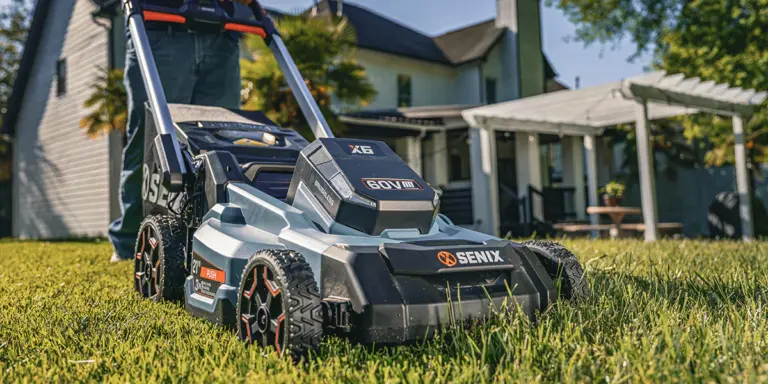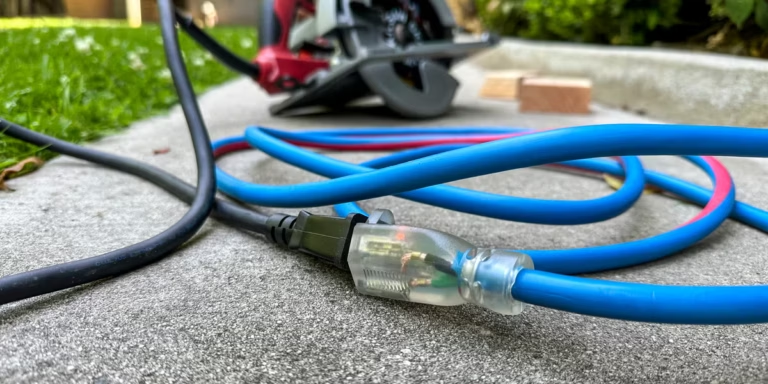Battery vs. Gas-Powered Trimmers
Choosing the right string trimmer can make a huge difference in how your yard looks and how much effort it takes to maintain. I’ve used both battery-powered and gas-powered trimmers for various yard sizes, terrain types, and trimming tasks over the years. Each type has its strengths, weaknesses, and unique quirks that make them better suited for specific users and situations.
The choice between battery vs. gas-powered trimmers isn’t always black and white. Some homeowners need raw cutting power and long run times. Others value quiet operation, easy starts, and zero emissions. My goal with this article is to share the detailed differences I’ve observed through hands-on experience, along with tips that can help you decide which tool fits your needs best.
From performance and portability to environmental impact and maintenance, let’s dig deep into the debate of battery vs. gas-powered trimmers and figure out which is the smarter pick for your yard.
Power and Performance Comparison
One of the first things I noticed when comparing these two tools is the sheer difference in torque and cutting power. Gas-powered trimmers generally have the upper hand here. With their combustion engines, they deliver high RPMs and consistent performance, especially in tall grass, overgrown areas, and along thick brush.
Battery-powered trimmers, on the other hand, have come a long way. Today’s models, especially those using 40V, 56V, or 80V batteries, are surprisingly strong. I’ve used battery trimmers that sliced through weeds with ease and delivered close to the same performance as my old gas unit. Still, gas wins when it comes to sheer muscle, especially for commercial use or large rural properties.
If your yard is full of tough grass or you often go a week or more between trims, gas might give you the advantage. But if you’re keeping up with weekly maintenance and don’t need to chew through brush, the power of modern battery trimmers is more than enough.
Weight and Handling
One of the biggest differences I’ve noticed between battery vs. gas-powered trimmers is how they feel during use. Gas models are typically heavier and a bit more cumbersome, especially with a full tank. They’re also usually louder and vibrate more, which can get tiring if you’re trimming for more than 20 minutes.
Battery-powered trimmers are generally lighter, quieter, and smoother to operate. The lack of a gas tank and simpler motor design makes them easier to maneuver around fences, trees, and flower beds. I found that trimming along curved borders or tight corners is much more comfortable with a battery unit.
If you value ease of use and comfort, the lighter build and reduced vibration of battery-powered trimmers might suit you better. For older users or those with smaller yards, the handling advantages of battery tools can’t be overstated.
Run Time and Refueling
This is one of the areas where gas trimmers still hold a clear lead. With a full tank of fuel, I can usually trim a large yard and then some without worrying about the engine quitting. If it does run low, a quick top-off and I’m back in action.
Battery-powered trimmers rely on the charge left in the battery, and while high-capacity models can last up to an hour, most fall short of that during aggressive use. I’ve had times where I didn’t finish trimming the entire yard on a single charge. If you’re planning to go battery, having an extra charged battery on standby makes a world of difference.
That said, swapping batteries is easier and cleaner than dealing with fuel. There’s no mess, no smell, and no need to mix oil and gas. But if long uninterrupted sessions are crucial, gas still has an edge in the battery vs. gas-powered trimmers comparison.
Maintenance and Upkeep
One of the biggest reasons I’ve gradually moved toward battery tools is the lower maintenance. Battery-powered trimmers don’t need spark plugs, fuel filters, carburetor adjustments, or oil changes. I just charge the battery, clean the trimmer head occasionally, and it’s good to go.
Gas trimmers, in contrast, demand regular maintenance. If left with fuel in the tank, they can gum up. Starting them after sitting through winter can be a hassle. I’ve had to pull cords, adjust chokes, and clean spark plugs more times than I care to remember. Even storing gas safely becomes part of the routine.
For those who love tinkering with engines, the maintenance of a gas trimmer might not be a big deal. But for me, the simplicity of battery-powered models is a huge benefit in the battery vs. gas-powered trimmers decision.
Noise and Vibration
Noise is a factor many overlook until they fire up a gas trimmer early on a weekend morning and hear the neighbors groan. Gas-powered trimmers are loud. Most of mine required hearing protection, especially when trimming near walls or fences where the sound bounces back.
Battery-powered trimmers are remarkably quiet. I can use them without earplugs, and the hum is much more tolerable than the roar of a gas engine. This makes a big difference when trimming near kids, pets, or sensitive neighbors. I’ve even used mine early in the morning without disturbing anyone.
If peace and quiet matter to you—or if you want to do yard work at off-hours—battery-powered trimmers take the crown here. It’s one of the strongest reasons to lean battery in the battery vs. gas-powered trimmers debate.
Environmental Impact
Gas engines emit fumes and contribute to air pollution, even the small ones used in yard tools. Every time I used a gas trimmer, I could smell the exhaust on my clothes, and I knew I was breathing in something less than healthy. Multiply that by weekly use across the country, and the environmental cost starts to add up.
Battery-powered tools run clean. They don’t release emissions during use, and newer models are being paired with rechargeable batteries made from recycled or responsibly sourced materials. Of course, battery production has its own footprint, but overall the eco-impact is lower than gas.
If reducing your environmental impact is a priority, the answer in battery vs. gas-powered trimmers is pretty clear. Electric wins the green battle—literally and figuratively.
Initial Cost vs. Long-Term Value
At first glance, gas-powered trimmers can seem cheaper—especially the basic models. But over time, costs add up. Fuel, oil, spark plugs, repairs, and even pull-cord replacements start to creep into the budget. I’ve spent a fair amount over the years maintaining a fleet of gas tools.
Battery trimmers often come at a higher upfront cost, especially if you’re buying into a brand’s battery ecosystem. But after that initial hit, the costs are minimal. No fuel, no frequent repairs, and batteries often last for years. Plus, if you already own other tools from the same battery platform, you can share batteries and chargers, saving even more.
From a long-term value standpoint, the investment in a quality battery trimmer tends to pay off. It’s a point worth considering seriously in the battery vs. gas-powered trimmers showdown.
Ideal Users for Each Type
After years of use and experimentation, I’ve developed a sense of who benefits most from each type. Gas-powered trimmers are still ideal for:
- Commercial landscapers
- Rural homeowners with large properties
- Users dealing with thick brush or tall weeds
- Anyone needing hours of continuous trimming
Battery-powered trimmers, in contrast, work best for:
- Urban and suburban homeowners
- People looking for quieter tools
- Gardeners who value clean energy
- Those with small to medium yards
Your needs, yard size, and frequency of use play a big role in which direction makes sense. I’ve personally settled into a hybrid approach—battery for weekly yard work and a backup gas trimmer for the occasional heavy-duty session.
Practical Tips from Real-World Use
Here are a few personal lessons learned that might help:
- If you’re going battery, invest in at least two batteries to avoid downtime.
- Keep your charger in an accessible place so you’re more likely to stay topped up.
- For gas users, run your trimmer dry before winter storage to avoid carburetor issues.
- Always clean grass and debris off the head after each use, no matter which type you have.
- Don’t overthink brand loyalty—sometimes one brand’s battery system just suits your workflow better.
These simple habits have saved me hours and kept my tools running smoothly.
Final Verdict
After weighing every factor—from noise and power to convenience and cost—it’s clear that both options have their place. Battery-powered trimmers are catching up fast in performance and have already surpassed gas in ease of use, noise, and environmental impact. Gas-powered trimmers, however, still lead the pack in raw power and extended use time.
The battery vs. gas-powered trimmers debate really comes down to your specific needs. For most homeowners with modest lawns and regular trimming routines, battery trimmers offer more than enough capability, without the hassle of gas engines. For those tackling dense brush or managing large properties, gas tools still make sense—at least for now.
Personally, I’ve leaned toward battery for 90% of my trimming jobs. It’s quieter, cleaner, easier to handle, and starts up with the press of a button. But I haven’t completely ditched my gas trimmer either—it’s like having a chainsaw in the shed: you might not need it every week, but when you do, you’re glad it’s there.
So weigh your priorities, consider how you use your tools, and let that guide your decision. Either way, having the right trimmer in hand makes all the difference between a frustrating chore and a job well done.







